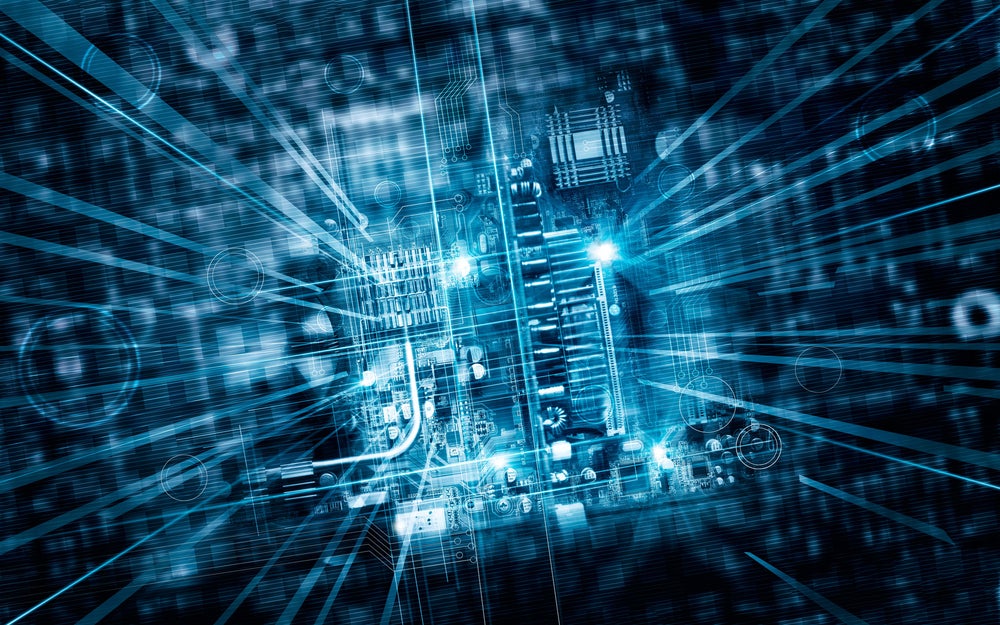
Data storage devices can come in two form factors: hard disk drives (HDD) or solid state drives (SSD). So what are memory chips in business and what are the main themes?
Hard disk drives use a mechanical arm with a read/write head to move around and read information from the right location on a storage platter. Solid state drives store data in microchips. SSDs are faster because they have no moving parts. They are also more compact than HDDs so they are more suitable for use in miniaturised computers such as smartphones.

Access deeper industry intelligence
Experience unmatched clarity with a single platform that combines unique data, AI, and human expertise.
In general, the world is moving away from HDDs towards SSDs.
Solid state memory, or memory in microchip form, come in two form factors: RAM and flash memory.
Flash memory is used for storage, while RAM (random access memory) is used as active memory that performs calculations on the data retrieved from storage.
RAM is faster than flash memory, but it is also more expensive to make. Flash is non-volatile memory, which means it can hold data even when the power is switched off. By contrast, RAM is volatile and cannot hold data without a power source.

US Tariffs are shifting - will you react or anticipate?
Don’t let policy changes catch you off guard. Stay proactive with real-time data and expert analysis.
By GlobalDataThere are two types of RAM commonly used in a computer system: dynamic random-access memory (DRAM) and static random-access memory (SRAM).
SRAM is faster and more expensive than DRAM. SRAM is mainly used as the cache memory inside a computer’s central processing unit (CPU). DRAM is typically used as the operational memory which runs the operating system and applications.
Flash memory also has a finite number of program-erase cycles before individual blocks can no longer hold any data. Wear levelling helps extend the life of flash memory by spreading the data to different blocks.
Flash memory has strategic importance to companies like Apple because the compact chips are essential components for its iPhones and iPods, allowing iOS users to store photos, videos and other data reliably and in a compact form.
Why do memory chips matter to business?
DRAM chips comprise 60% of this market and NAND flash chips 40%, by value. The market still operates on the lagged perception that the memory sector is subject to gut-wrenching cycles of over and undersupply. In reality, the supply side has seen consolidation, with the number of key players halving in the last decade, reducing competition to an oligopoly scenario. At the same time, on the demand side, new and powerful technology cycles, such as Big Data, artificial intelligence, augmented reality, cloud computing, edge computing, blockchain and the Internet of Things, are boosting the importance and price of memory chips.
The main long-term threat to the leading memory chip makers is that China will build a world-class indigenous memory chip sector and then crash market prices for memory chips, as it did with LEDs and solar panels.
There is also the prospect that, early in the next decade, memories based on new technologies will arrive at scale.
Growing memory demands of the global hyper-scale data centres, powering the next generation of advanced technology cycles, is expected to outrun sector capacity. This applies to the working memories that feed operating processors with data (DRAMs) and probably also to flash storage memories (NAND) used to store photos and videos on smartphones.
Moore’s Law, which states that the number of transistors in a chip will double every two years, is now breaking down. Using standard silicon technology, there are limits to how close transistors can be put on silicon before leakage, which occurs because the transistors sit too closely to each other.
Further advances in computing power are therefore likely to come from new materials like graphene, new memory architectures, such as memory-biased CPU architecture or non-digital processing units, like quantum computers.
As the bottleneck in the technology sector becomes the speed at which Big Data can be processed, the product buzz in the chip sector has shifted from calculation speed to search speed. New technologies like memory-biased CPU architectures, which incorporate faster, denser memory located closer to processing units, could act as a game changer that might make traditional NAND flash technology obsolete.
This article was produced in association with GlobalData Thematic research. More details here about how to access in-depth reports and detailed thematic scorecard rankings.







